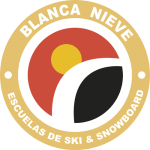Ski equipment: What is the most important thing when choosing skis or ski boots?
You must know what the ski equipment is so that you know how to choose it when renting or buying.
How to choose the ski equipment according to the level of skiing or the slopes you want to ski?
When we decide to practice a sport and we want to do it with technique and safety, it is very important to take lessons to learn and improve.
Also so is the choice of skiing equipment, skis and boots, i.e. choosing the right ski and the right boots, the size, the hardness, etc.
Choosing the right ski equipment according to the type of snow, and the discipline we practice will be important points to take into account when buying or renting ski equipment and boots.
Here are our tips to help you choose the best ski equipment for you.
Ski equipment, the variety of skis or boots is increasing
The choice depends on what kind of snow we are going to ski or what kind of discipline we are going to do.
Each ski equipment has advantages and disadvantages, depending on the use we want to make of it.
The key is to choose the skis or boots that are designed for the discipline we like to do the most and the one we are going to practice the most.
That doesn’t mean that you can’t ski the whole mountain with any equipment. But you will enjoy it more if you have the right equipment for each slope or snow.
That’s why our idea is to give you a basic guide of what you need to know when putting together your ski equipment, whether you are going to buy or rent it.
The skis, a fundamental part of ski equipment:
Which skate, wider or narrower?
The ski skate:
The choice depends on the snow on which we are going to ski. The minimum width of its middle part, which is called “skate”, is very important.
Depending on the type of snow you are going to ski on, you need to choose the right type of skis.
For this choice, the most important thing to take into account is the width of the skate.
The narrower it is, the more piste the ski is.
The characteristic of narrow skis is that they give the skier the possibility of more speed and grip, ideal for steep slopes.
Being stiffer and heavier, they give more stability and help to take turns better, and because they are wider, they are more flexible and more suitable for deep snow or powder.
Wide skis are slower and better for deep snow skiing.
For these reasons, skis with an intermediate skid are recommended for beginners on the slopes.
Ski height:
We must take into account our height when choosing the ski, and also according to the type of snow we are going to ski, on-piste, off-piste, trodden snow, virgin snow, or powder.
Short skis are easier and more agile to move on.
Longer skis make it more difficult to move and rotate but are more stable at high speed.
It is usual to wear skis at a height between the chin and the eyebrows, depending on where we are going to ski, whether on-piste or off-piste and the skier’s level.
Tell us your ski level and height and we will advise you which ski is ideal for you.
Choosing the right ski boot, is another essential in the choice of ski equipment:
Not too big, not too small.
It is said that a good skier skis well with any ski, but it is not the same with any boot.
The right boot is what mainly makes the control we are going to feel when we are skiing.
There should be no gaps or play because we can lose control. Not too big, not too small. It must be tight and fixed, and the toes must be comfortable.
We will then look for a boot of a smaller size than our foot and the narrowest, even if it hurts on the sides. If that’s how we feel, it’s the perfect boot.
As the boot is rigid, the movement of the foot goes directly to the ski. Boots get bigger with use, they should be well fitted.
Ski boots are measured using the international Mondopoint system, foot length in cm.
You can try the “volume test”: remove the bootie, and using the shell, place the foot so that the toes are stretched out touching the toe of the boot, and have an internal space of no more than one toe between the heel and the back of the shell. This is the perfect fit.
The hardness of the ski boot:
The hardness of the boot is important for forward flex.
Flex is the measurement that shows the tightening of the shank over the foot of the boot. It ranges from 50, which is a very soft boot, to 170, which is extremely stiff.
The higher the flex number, the more reactive the boot is. This results in greater transmission of leg movements to the ski.
The control and speed of response are greater and more of the unevenness of the terrain is transmitted. Racing boots have a flex of 130+. That’s why the right choice is so important.
Choosing the perfect skis or boots
The combination of the right skis and the right boots will give you the best safety and the most pleasant feeling when skiing.
What about you? Do you already have your perfect skis and boots? If you’ve got any doubts, contact us!
